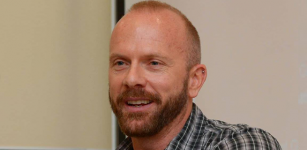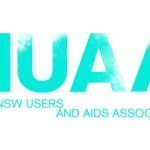LGBTIQ Harm Reduction Innovations: An Interview with Unharm’s Kane Race

Australian authorities continue to take a heavy-handed law enforcement approach to illicit substances. This is despite the evidence that suggests zero-tolerance policies actually increase the harms associated with the use of illegal drugs.
Victoria police are currently pushing for expanded powers that would enable them to search people at music festivals without having a reasonable suspicion to do so. While, the Andrews government continues to ignore the evidence supporting a safe injecting facility for North Richmond.
NSW police use of sniffer dogs at music festivals and events is widespread, even though these operations have been shown to be overwhelmingly flawed. The false positive rate – when a dog makes an indication, but no drugs are found – was 70 percent over the year 2015.
Harm reduction experts have consistently warned that the use of sniffer dogs leads festival goers to partake in dangerous drug taking practices.
These practices include preloading, when a person takes all of their drugs prior to an event to avoid detection. And panic overdosing, when an individual consumes all of their drugs on seeing a police dog operation.
A peer-based approach
The police use of sniffer dogs during the Sydney Gay and Lesbian Mardi Gras has been notorious over the years. And along with the dogs, come the numerous reports of NSW police resorting to the use of invasive strip searches to accompany them.
As a result of the over-policing at the 2013 Mardi Gras, the Fair Play initiative was launched. It sees trained volunteers present at events advising party-goers of their legal rights, and documenting police operations.
Since the implementation of the initiative, there have been fewer police searches and charges of drug possession.
Fair Play is a take on the classic harm reduction approach of having specially trained volunteers present at events to provide health and support services. Indeed, this approach was developed on the LGBTIQ party scene.
Tried and tested
Last week, a pill testing trial was finally approved for an Australian music festival. ACT health minister Meegan Fitzharris announced that her government has agreed to allow a pill testing service be trialled at the Spilt Milk festival on November 25.
Health professionals and community groups have been calling for the introduction of this evidence-based harm reduction method for years now. And one of the strongest voices behind the pill testing push is the group Unharm.
The LGBTIQ contingent
Founded in 2014, Unharm is a grassroots organisation “campaigning for safe, positive and ethical drug use.” The group has pointed out that “Sydney’s queer party scene has been a crucible for innovation in promoting safety without losing sight of pleasure.”
And out of these elements the Queer Contingent of Unharm was formed. Kane Race is convenor of the contingent. The Sydney University associate professor in queer and cultural studies is an expert in the fields of drugs, health and sexuality.
Sydney Criminal Lawyers® spoke with Kane Race about the urgent need to roll out pill testing services, the detrimental approach Australian governments are taking to illegal drugs, and why the queer community has played such a vital role in harm reduction.
Firstly, Kane, it’s been announced that a pill testing trial will be conducted at the Spilt Milk festival in November. However, the NSW state government has been reluctant to even consider such a trial.
Why do you think the state government is so against trialling this harm reduction approach that has been proven to save lives in numerous countries in Europe, where it’s been used for decades?
It kind of confounds understanding. But, the NSW government, and in particular, the NSW premier’s office and the NSW minister for police do not seem to be interested in minimising harms at events such as these. I don’t think that is what they are interested in.
Nor are they inclined to actually respect and engage with the decisions of members of dance communities, despite the remarkable successes that they’ve achieved by adopting similar sort of partnership approaches in the context of the AIDS crisis.
It seems to suit these agencies better to mount high profile operations. It’s like a form of show policing to send out the moralising message about the illegality of drugs, via drug dog operations. And really just shame people and make them feel like criminals or unworthy citizens.
That’s been their technique to date.
It’s a lazy technique. It’s unconstructive and it’s counterproductive. Why not put proven measures in place?
Or at least allow experiments to be run – like pill testing – that allow people to make a more informed decision about what they’re thinking of swallowing to enjoy a particular event with their friends or communities.
Why not also work with members of these communities to minimise harms among them? To learn from and to harness their creative energies and ideas. Rather than framing these communities as deviants or immoral or criminal.
This is a much more enlightened government approach. We’ve done it in the past in Australia, over the context of the AIDS crisis. It worked a treat. Why aren’t we doing it now?
How necessary is it that pill testing services are rolled out at music festivals and events? And what sort of changes do you think the implementation of these services would bring about?
It’s not only necessary. It’s actually pretty urgent. We know that there are some very dangerous substances circulating in the guise of ecstasy. Such as NBOMe, which was the drug that was responsible for three deaths in Melbourne’s nightclub district back in February.
Pill testing allows people to make a more informed decision about what they are planning on taking. Instead of operating in the current state-imposed informational vacuum, which is what criminalisation is.
Pill testing will help minimise the potential for harms at these events by better informing participants in them. And I think it will also help to foster greater respect between dance and music festival communities and government.
That is, it will constitute drug using communities as agents of their own care, and informed consumers, rather than as criminals who should be punished.
Those are the sorts of changes it will bring about. But, there are other urgent things to do, apart from pill testing.
Just as important for the queer community, and some other dance communities in Sydney and Melbourne recently, is better education around reducing the risks of GHB and GBL consumption. And that’s why our queer contingent ran a GHB forum in July.
G is a drug that some people have preferred and others have been introduced to in response to the policing of ecstasy, because they think that the dogs won’t detect it.
And it’s really essential that new users of this drug, which can be very dangerous in certain doses and in certain contexts, have access to harm reduction information about how to enjoy it in a way that avoids such dangers.
A lot of the deaths that we’ve seen at music festivals, or at least some of them, may indeed actually be related to GHB. But, without toxicology reports forthcoming from the NSW police, it’s anyone’s guess.
What sort of role would you say illicit substances play in the queer community?
Dance parties have been a major source of celebration and community building in the queer community. And dance culture would not exist as we know it today, without psychostimulants, such as ecstasy.
MDMA is thought to help people process trauma. Indeed, it’s being trialled medically in some locations today for that effect. And I have no doubt that processing trauma in collective settings, such as dance parties, has been really important for the stigmatised social group, who was the hardest hit by the AIDS epidemic in this country.
Experimenting with the ways of experiencing the world and healing, which are the sort of things that psychoactive drugs enable, have been really important and productive for groups that have historically and are currently experiencing significant social stigma.
So, communal psychoactive practices may for some people allow them to experience the world slightly differently and slightly more pleasurably. And it might enable them to process and reframe things.
It’s a bit like an art of self-experimentation in a lot of queer people’s lives. And it’s no coincidence that this sort of experimentation and the self-experimentation associated with queer dance culture have also been a major source of cultural creativity and aesthetic inspiration in this country.
If we think of events like Mardi Gras, films like Priscilla, shows like the opening ceremony of the Sydney Olympics, which was like a Mardi Gras parade, and the films of Baz Luhrmann, a lot of the great aesthetic creations that Australia has become famous for in recent decades have their roots in queer dance culture.
It’s really part of collective experimentation with ways of living.
In your book Pleasure Consuming Medicine: The Queer Politics of Drugs you describe a party during the 2007 Sydney Gay and Lesbian Mardi Gras, where police descended upon the event with sniffer dogs and chaos ensued.
NSW police continue to carry out drug detection dog operations at the Mardi Gras and other events across the state.
What sort of effect is this law enforcement measure having on the attendees and the culture at these events?
The main effect is that it is just leading to steady declines in attendance and the viability of these community dance events, which is a great tragedy. In hand with the lockout laws, the policing at these events has killed nightlife in Sydney.
And nightlife has long been a really important space for queer socialisation.
It’s led to the fragmentation of the queer community. And increased isolation for people searching for a sense of sexual community.
It’s also been implicated in more dangerous practices of drug consumption, such as the increases in GHB use that I mentioned earlier, as well as all the risks associated with the various avoidance strategies that people adopt when they are faced with the drug dogs, such as preloading, or taking all your drugs at once to avoid detection.
The other thing the intense policing of these sorts of events and spaces is at least implicated in is a lot of gay men’s growing attachment to home-based partying, or chemsex, where more dangerous drugs are consumed in more underground places and in ways that are disconnected from care services that are generally a feature of queer dance events.
It’s having all sorts of knock-on effects that need to be reckoned with.
More broadly, government takes a heavy-handed approach to illegal drugs overall. Why do authorities continue to crackdown on these substances, when there is ample evidence out there that it doesn’t work? And what purpose does this serve?
One function it probably serves is the militarisation of the state and the police.
So, drug law enforcement has been a convenient way for police to argue for increased powers, such as searching random people on the street, which invades the privacy of deviant or suspect populations, like youth, racial minorities, sexual minorities and homeless people.
Another purpose it serves is ideological. It allows the state to deflect responsibility for drug problems. To make it an issue about people’s personal moral responsibility. That people who run into casualties when they consume these substances are just getting what’s coming to them.
It allows the state to send a message about personal responsibility by consumption. And align personal responsibility to social compliance with state determinations of what’s normal and what’s deviant.
PrEP is a drug that if taken daily has been shown to prevent HIV infection. This preparation has the potential to lower HIV rates amongst key at-risk populations, such as men who have sex with men and people who inject drugs.
PrEP is available through importation and trial. However, it is notoriously hard to get your hands on, terribly expensive and very controversial.
Why are authorities making it so hard to access a drug that has the potential to save lives and stop the spread of HIV?
So far, the Pharmaceutical Benefits Scheme (PBS) has rejected two applications to have PrEP subsidised under that scheme. And these have been on fairly technical details, on the supposed grounds of cost-effectiveness.
Gilead, who is the manufacturer of Truvada, should lower its price. And the PBS should probably engage with some problem modelling and other scientific observational studies of the effect of PrEP at a population level in comparable cities.
There’s no doubt that when made widely available PrEP has an impact on HIV rates. We’ve seen this in many contexts. This year had the lowest rates of HIV infection in NSW among gay men for many years. And it’s no coincidence that this is a year in which we’ve seen mass participation in PrEP trials on the part of gay men in NSW.
And exactly, the same thing happened in San Francisco and London. These places where rates of HIV infection among men who have sex with men have been going up and up for years.
All of a sudden, you run PrEP trials, which have mass participation, and we’ve seen historic drops in HIV incidents in all of those locations.
It seems to me that the PBS really needs to get its act together and recognise what we’re learning from comparable contexts. Because it is a cost-effective and very important intervention. And it has the potential to drastically change the course of the epidemic in this country.
But, do you think there’s some moral reasoning behind why it is not becoming more readily available at a faster rate?
I think that has been the case in some countries. But, that’s not the sense I get here in Australia. At least, not from what the TGA and the PBS have said. Even if that is lying in the background, they’re main argument seems to be in terms of we need better modelling and cost-effectiveness.
As far as I know, Australia has a much more secular and open-minded approach to these things. If it were being hampered by moralistic sorts of judgments about what PrEP might do, I just think that they do not hold water.
When there’s a flu epidemic about, we don’t tell people to stay at home, rather than accessing treatment or seeing doctors. So, why is it any different for people’s sex lives?
Would you say that in our culture a paradigm has been set that suggests pleasure is at odds with health? And if so, what are the consequences of this?
That’s what I argued in my 2009 book, Pleasure Consuming Medicine.
Sometimes health is sort of constructed as very pleasurable. Perhaps it is more accurate to say that a situation has emerged in our culture, where health and medical and juridical authorities still get to determine what forms of pleasure are legitimate, and what forms are deviant.
One of the ways they do that is through drug criminalisation. And we should have moved on from that by now.
Back to the 2007 Mardi Gras party, at that event there was a volunteer care team trained to deal with drug emergencies.
Last year, we spoke to Will Tregoning, executive director of Unharm, who said that queer communities have been “innovators in the ways to care for one another in club environments.”
What sort of harm reduction approaches would you say have emerged out of the queer scene?
There are quite a few actually. One is the practices of medical tents at dance parties. Big tents were set up at parties like Mardi Gras in the early days of the AIDS crisis. Initially, to provide care for people with AIDS.
They became harm reduction tents as well. And they developed unique sets of practices about how to provide care in a non-judgemental way at these events, recognising that a lot of people there were probably high on drugs.
The other thing we’ve had is the volunteer care teams that developed from 2000, which I talk about in my book, such as the ACON rovers. They’re teams that rove around parties and are effectively like the eyes and ears of medical tents in the sense that one of the risks of drugs like GHB is people might fall unconscious under the bleachers or in the bathroom.
And the rovers go around and make sure nobody is in trouble and bring them to the medical tent if they need to be.
Also, there’s the peer education around harm reduction that community groups and organisations have found ways of sharing and circulating. This is pragmatic, peer-led, non-judgmental advice about how to look after yourself if you are going to use different substances.
The fourth thing is a broader culture of care that becomes possible when you feel like you are a member of a pleasure community.
The queer community invented new ways of caring for people outside of their immediate family. And this really needs to be acknowledged, celebrated and supported.
I take up a lot of these issues in my new book, which was released this year, called The Gay Science. It explores how engaging with the pleasures and experimental activities of drug consumers and those who care for them generates effective innovation in care in the field of harm reduction.
And lastly, besides pill testing, what other sort of harm reduction measures do you think need to be implemented in the Australian setting?
The first thing is we need to change police cultures and the ways of approaching drugs. We need to decriminalise the possession of drugs. That’s the most important thing.
There are various other things like peer distribution of Naloxone. We need more medically supervised injecting centres.
In the longer term, we need to eliminate the black market in drugs. And we need to remove the stigmatisation of drug users. And one way of doing this is to experiment with regulated markets for some substances. Because, drug users don’t actually want to die.
They want safe access to particular substances available for them. And there are other ways of keeping them safe than criminalisation, which is refusing responsibility for the quality of the substances that different groups of people want to access.
Experiments with regulated markets in some substances are worth thinking about. But, we need to be very careful and inventive.
The final thing is to empower drug consuming communities to work with and produce innovations in harm reduction that are in touch with everyday street knowledge and know-how about how drug scenes and these events operate.
Community empowerment and removing stigma should become a very big part of harm reduction. And that’s why groups like Unharm and NUAA are very important.
Kane, thanks very much for taking the time out to have this chat with us today.
No worries.







